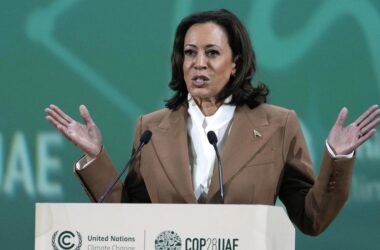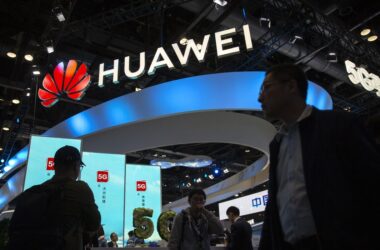Department of Energy Sec. Jennifer Granholm’s summer road trip in an electric vehicle was meant to promote the Biden administration’s green energy agenda.
Instead, it highlighted the risk of transitioning away too quickly from gas-powered cars.
Ms. Granholm’s four-day EV trip this summer through the southeast ran into charging woes for her caravan of three EVs, according to NPR, which was along for the ride. One incident involved a member of her team traveling ahead to reserve a rapid charger by using their gas-powered vehicle to block access for other EVs, infuriating a family to the point that they phoned the police.
“If the Biden administration can’t make it from Charlotte to Memphis without an incident, then how do we expect that all of our non-tactical military fleet is going to get transitioned by the year 2030 without having big issues?” Iowa GOP Sen. Joni Ernst, a member of the Armed Services Committee, told reporters. “This greenie push out there for those electric vehicles — it is not realistic.”
“It is a road to nowhere,” she said.
The Biden administration is pushing to decarbonize the armed services, which has said climate change poses a national security threat. The Army’s “Climate Strategy” plan unveiled last year outlined its desire to reduce emissions by 50% from 2005 levels by 2030 and reach net zero by 2050 with the help of a rapid EV transition to an all-electric non-tactical vehicle fleet by 2035.
Montana Sen. Steve Daines, chair of Senate Republicans’ campaign arm, summed up the administration’s energy policy as “replacing American-made oil and gas with Chinese batteries.”
“It demonstrates just how unrealistic the Democrats’ and this administration’s green hallucination really is,” he said. “We only have one charging station in Montana per 1,700 square miles.”
The Department of Energy declined to address Ms. Granholm’s charging station altercation but touted progress being made on new public chargers from federal and private funds that have reached roughly $24 billion.
“With President Biden’s historic Investing in America agenda, we have over $7 billion to build out convenient and reliable EV charging infrastructure, a portion of which is already awarded to every state, D.C. and Puerto Rico,” a department spokesperson said in a statement. “The private sector is following suit with equally ambitious investments — growing our workforce and keeping money in the pockets of hardworking Americans.”
Ms. Granholm’s 770-mile trip was from Charlotte, North Carolina, to Memphis, Tennessee. The EVs traveling with her featured a Cadillac Lyriq, Ford F-150 Lightning and Chevy Bolt, all of which require more than two full charges to make the trek.
As she prepared to utilize a fast charger in a suburb of Augusta, NPR reported that an Energy Department staffer used a gas-powered vehicle to block access before Ms. Granholm’s arrival. A family with an EV who had a child in the car on a hot summer day was prevented from using it, resulting in the family calling the cops. Authorities were unable to do anything because it was not against the law for a non-EV to use the spot.
Ms. Granholm’s staffers sought to remedy the situation by sending other EVs to slower chargers until there were spaces for both the family and the secretary to use the fast chargers.
The administration has proposed a tailpipe emissions rule that would force automakers to slash the sales of new gas-powered cars for EVs to account for up to two-thirds of new sales by 2032. The automotive industry has questioned the feasibility of such a rapid change while industry analysts sound the alarm over the lack of nationwide public chargers.
The California Energy Commission estimates a ratio of seven EVs per public charging port is needed. The U.S. had a ratio of 29 EVs per public charging port at the end of 2022.
Nearly a million new EVs hit the roads last year but there were just 24,600 new chargers, which is 38 new EVs for every new public port, according to the Alliance for Automotive Innovation. President Biden’s goal is to build 500,000 new ports by 2030.







